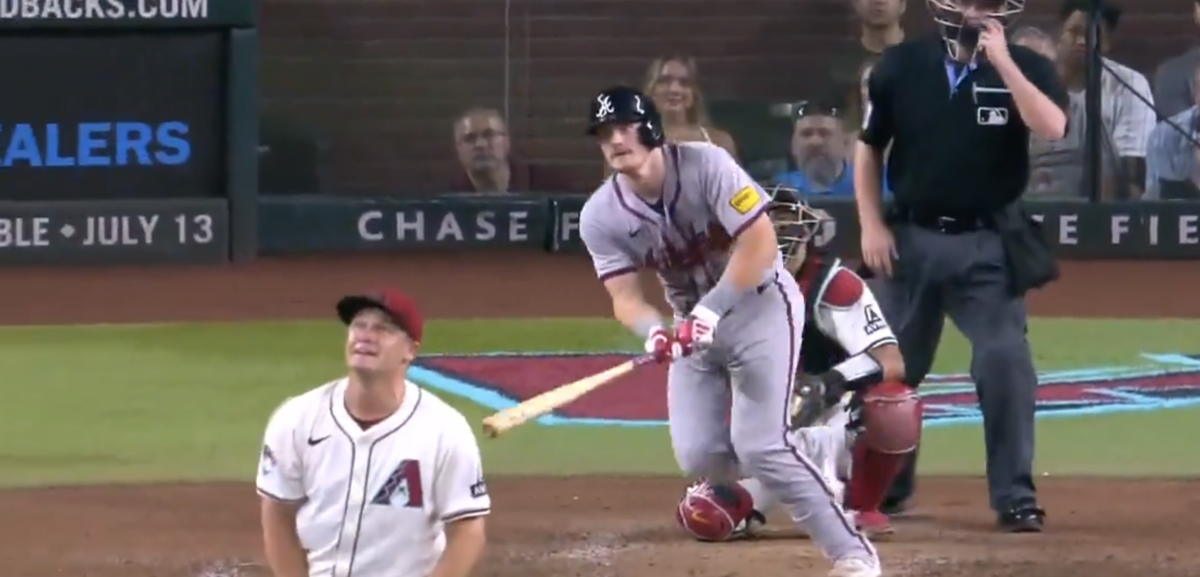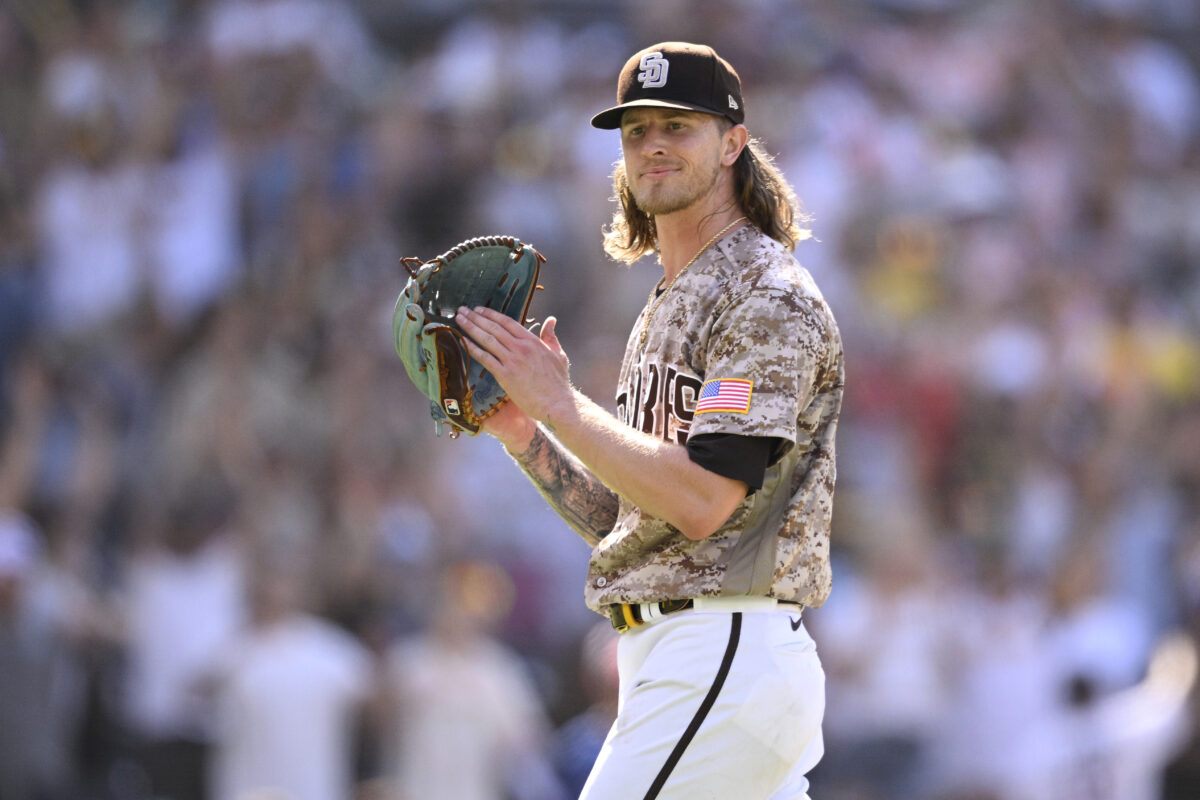It truly takes a special type of pitcher to be a closer. You have to be comfortable sitting for an entire game and then being able to lock in for high-leverage situations. And even the best closers will experience struggles. It’s never easy.
Diamondbacks closer Paul Sewald is going through one of those tough stretches right now, and it got even worse on Monday night with one of the most defeated announcing moments we’ll hear this season.
Coming off two straight blown saves, Sewald entered the game in the ninth to face the bottom half of the Braves’ lineup. He got two quick outs. But an Eddie Rosario single kept the Braves’ hopes alive. On a 1-1 count, Sewald tried to force Sean Murphy into a roll-over grounder with an outside corner fastball. Instead, he left it up, and Murphy barreled it.
D-backs announcers Steve Berthiaume and Bob Brenly were stunned.
oh my lawdy this is rough from the Diamondbacks boothpic.twitter.com/SUSGXNeh7p
— Kevin Keneely (@KevinKeneely1) July 9, 2024
“And it’s happened again,” Berthiaume said before a solid 15 seconds of silence.
The game-tying home run was Sewald’s third straight blown save, and the Braves went on to win, 5-4, in 11 innings.
D-backs fans certainly related to Berthiaume’s reaction after that one.
This was how Twitter/X reacted
Dbacks booth is great
Watched the whole game listening to them and they talk like fr unfiltered fans, I wish this was normalized and not deemed as disrespectful or bad. https://t.co/6foKrWczXp
— Jermaine (@Jermainerw07) July 9, 2024
bro single handedly turned me into a demon https://t.co/M4IIasXUj7
— unbiased (@unbiasedpicks) July 9, 2024
That “Ugh…” afterwards by his partner. 😂
Beyond this and the Rosario GS game last year…I feel like Arizona is a place that we’ve had some wild comeback wins over the years for a place we only go to once a season. https://t.co/XTQP60qYaT
— I Blame Nick Ressler… (@MoKak78) July 9, 2024
“UGH” 😂 https://t.co/4KGapKY40K
— Mateo (@losbravosmateo) July 9, 2024
We'd probably be World Series Champs as well if he didn't blow Game 2. 🤦♀️ #Dbacks https://t.co/wyJzRxgI3M
— Gloworm (@CoachyHernandez) July 9, 2024
I said this when we got him. If you don’t have elite off speed or accuracy you better not miss up. Go back and watch. Guy tries to beat guys up in the zone throwing 93. It’s just ignorant. I never liked the move but understood he was all that was out there… https://t.co/dK08zmPq76
— K (@AZSports9292) July 9, 2024
Nothing says Dbacks more than them having a closer who throws a little goofy and below league average velocity. https://t.co/Ij0Xnn3hgr
— Rod Nosbor (@rodnosbor) July 9, 2024
Man… Sewald is definitely in a slump. https://t.co/Sdjvg4oFm5
— Jordan64 (@jordan64g) July 9, 2024
[lawrence-auto-related count=3 category=1374]

